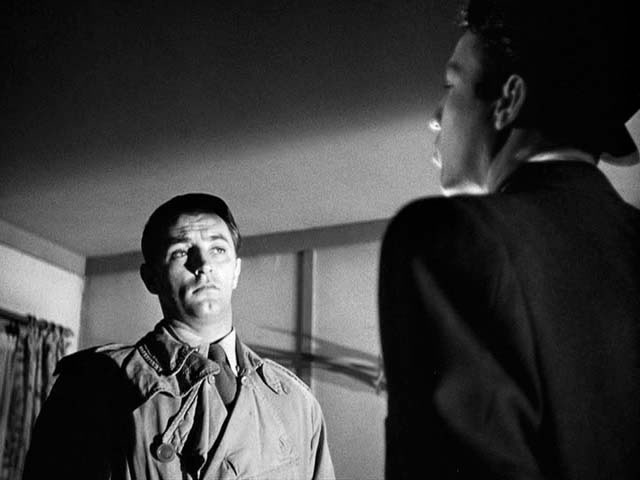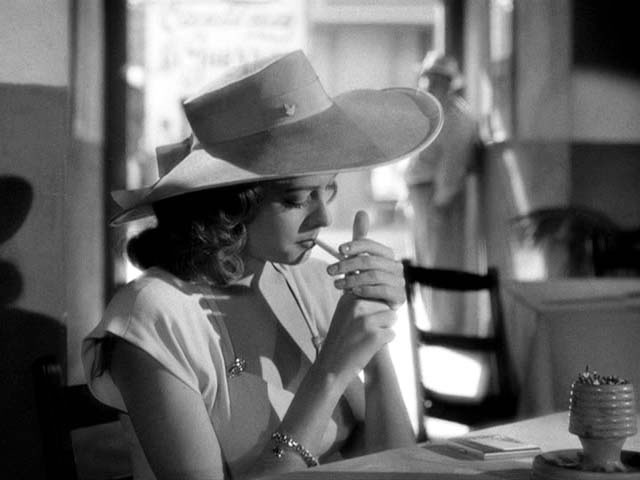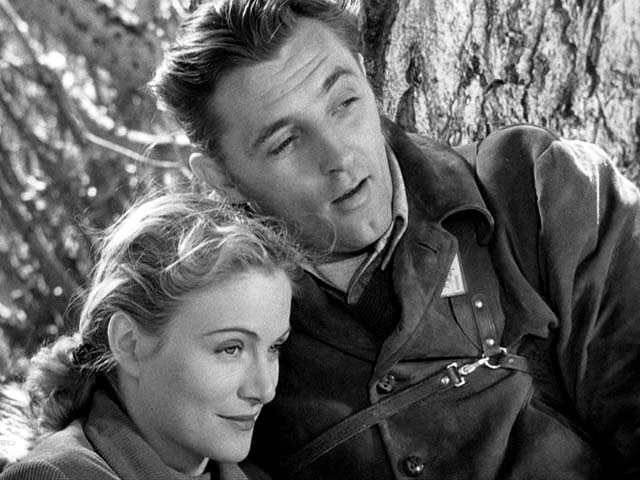Film Noir as Genre (Lecture)
Defined principally by visual style, but also by theme and narrative.
Visual Style
Rooted in German expressionism Many Film Noir directors immigrated to the U.S. from Germany and France before WWII. -Stylization of Image expresses inner states of the Characters; Also, sylized settingis influenced by German expressionism. An example is to compare art from Edvard Munch The Scream and the film Dr. Caligari
Mise-en-scene
Lighting: The most critical aspect
- Low-key lighting: Strong contrast between light and dark. (examples through screen link on syllabus.) A great deal of shadow and outlines
- Night-for-night shooting: (the opposite of Day-for-night shooting) Until the 1940s, day-for-nights were used which was a technique of using a filter to make the day shots look somewhat like night. In Film Noir, Night-for-night was used which is when the shooting would actually be done at night.
http://www.tcf.ua.edu/Classes/Jbutler/T112/HitchHiker.jpg
Example of day-for-night shooting--from The Hitchhiker.
Setting
- Urban: the setting of Film Noir is in the seamy, sleazy parts of Urban cities (America). This shows the "Dark Side" of civilization. (examples below: boxing rings, beer joints, ally ways, sleazy hotels, nightclubs, waterfronts.)
File:BoxingPhantomLady.jpg File:Alley-CaseAgainstBrooklyn.jpg File:Bar-OutOfThePast020 jpg.jpg
Cinematography
Black-and-white film stock: Most Principle Film Noir is in Black and White
- Economic decision: in the beginning because it cost less to film in black and white and these first Film Noir were not planned to be prominent movies.
- Aesthetic decision: by shooting in Black and White, there was less variation in tones than there is in color; low-key, high-contrast lighting
Unconventional camera angles (most of these would not have been used in the 20s and 30s)
- Extreme low-angle: Camera near the ground looking up and usually has the ceiling in the fram(examples through link on syllabus)
- Extreme high-angle: from above looking down(examples through link on syllabus)
File:HighAngle-ladyfromshanghai03.jpg
- Extreme deep focus: All things in the shot are in focus (examples through link on syllabus)
File:Ladyfromshanghai01-DeepFocus.jpg
- Dutch angle: when the camera is tilted or not level (examples through link on syllabus)
File:PickupOnSouthStreet-DutchAngle.jpg
Theme
Fatalism: This means that the future is predetermined or the character is fated; characters are doomed from the very start; They are trapped or doomed; Usually, an indiscretion from their past comes back to haunt them; Example: Out of the Past, Jeff's past as a 'mobster' comes back even though he has tried to get away and change.
Moral ambiguity: Evil and Good are blurred; example Out of the Past Bailey does both bad and good even thought he is the protagonist. -Guilt versus Innocence: blurred; difficult to know for sure -Also, not only are these elements of the film blurred, these aspect shift during the film. This meaning that you can't count on the characters to be who you think they are from beginning to end.
Alienation: The Hero (antihero) is alienated from society; they don't fit in; they are cynical and paranoid (normally for good reason); not the traditional type of hero.
Misogyny: distrust or hatred of women; In Film Noir, women are evil and deceive men; also, women could be seen as more powerful, capable, strong characters than women's characters in the 20s and 30s.
Narrative
Conventional characters
Men
- Normally, the protagonists; very few Film Noir uses women as the protagonists (normally the antagonist)
- Morally ambiguous
- Alienated, fatalistic, cynical
- Destroyed by:
- Inner desires: because of their inner desires, the man is the author of his own fate.
- Outside, social forces: Things that the man could not control
Women
- Evil woman, femme fatale, femme noir: lures the hero to his doom; strong, independent (this could have been seen as evil in the 1920s)
- Redemptive woman: offers to redeem the hero; but almost always fails
Structure
Protagonist involved in something beyond his control Inevitably leads to his demise (could often deal with violence and gangsters)


